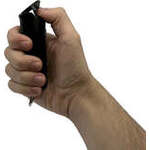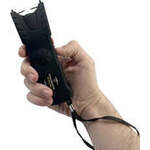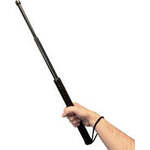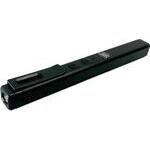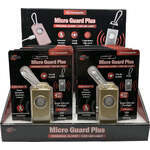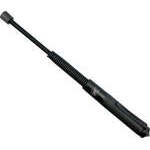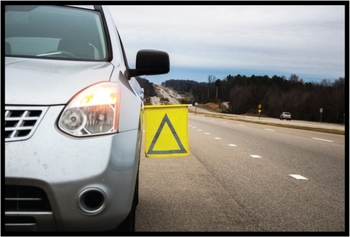
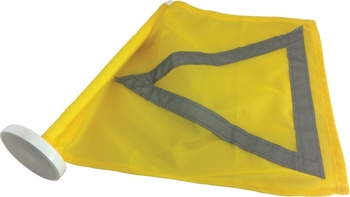
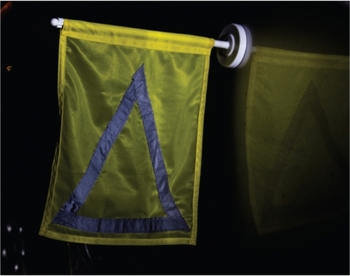
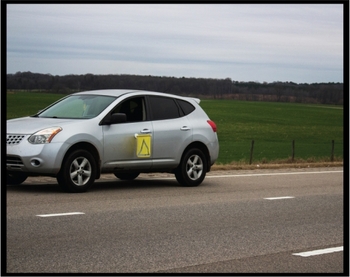
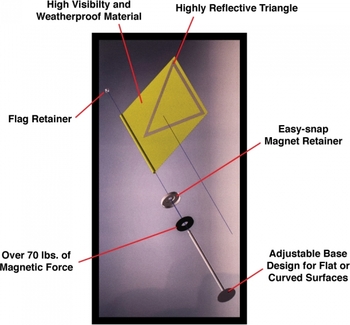
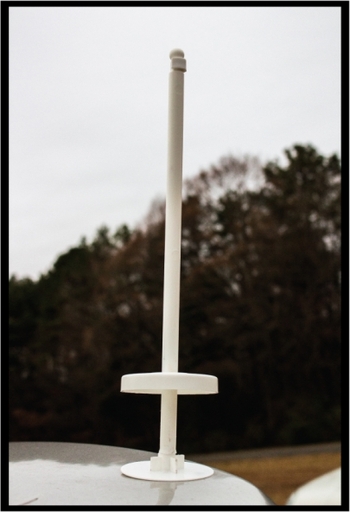
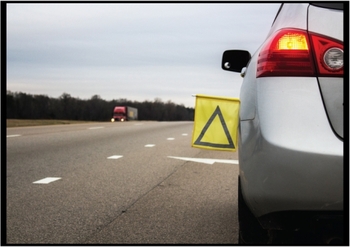
A traffic accident, also known as vehicular accident, motor vehicle accident, bike accident, or auto accident, occurs when a vehicle collisions with another vehicle, human, animal, or object, like road debris, tree limbs, animal limbs, or other moving vehicle. When a traffic accident occurs there is a huge aftermath of damage to the vehicles involved, passengers, and people on the roads. In many cases, the driver at fault is the one that has caused the accident. However, in some instances, the victim is the one that has taken damage, and the insurance company or the responsible party will seek to recover some form of compensation for this damage. This is why it is very important that you have adequate knowledge about the laws in your particular state so that you may know your rights during the settlement proceedings.
It is a common practice for drivers involved in a vehicular accident to at least verbally contest what is called an accident or traffic violation. Unfortunately, this often results in further injuries if the dispute escalates into a physical confrontation. If nothing else, you should remember that being in an auto collision is always dangerous regardless of how minor the collision may be. Some of the most common injuries that result from traffic or vehicle collisions are:
Vehicle collisions that happen near water can lead to the risk of Hydrostatic shock. Hydrostatic shock occurs when the oil or hydrocarbon content in your vehicle's engine compartment rises too much to the level of the cabin. This can result in a number of physical injuries, including hypothermia, burns, and broken bones. These injuries may also occur in cases of auto accidents that happen on the road where conditions are conducive to hydrostatic shock. In addition, there are other serious hazards associated with collisions involving hydrostatic situations.
Motor vehicle collisions often occur when two drivers fail to see one another. The majority of auto collisions in the United States happen when drivers are involved in collisions caused by poor or failure to see. This may result in injuries to both drivers, and additional damage to the vehicle and injury to other people. In many cases, the vehicle collisions that involve human factors such as fatigue, distraction, negligence, and errors of judgement may result in death or serious injury. Therefore, it is imperative that drivers who are involved in a collision with another vehicle carefully avoid those factors that can increase their risk of injury.
Automobile collisions that occur due to the negligence or reckless behaviors of drivers are some of the most frequent types of accidents that result in fatalities. However, there are also cases where drivers have caused fatalities through accidents that were the result of other human factors. One example of this is the case of a drunk driver who has been driving a vehicle that is legally intoxicated. The collision that causes the fatality can be attributed to the driver's drunken conduct, even if the accident itself was the product of another driver's negligence. Likewise, cases of hit-and-run accidents can be blamed on the negligent behaviors of drivers who did not yield or never knew they were running faster than necessary.
Vehicle collisions that involve both vehicles are the cause of most traffic fatalities in the United States. However, the rate of fatality for collisions involving vehicles is much lower in the United States than that of comparable countries, such as Canada and Great Britain. According to statistical data, the United States ranks tenth from the world in the number of vehicle fatalities that occur each year. Some of the countries with the highest rates of fatalities in vehicle collisions include the United Kingdom, Canada, and Australia.
In 2013 there were approximately 2,000 collisions involving one vehicle striking another that was stopped along the shoulder of a roadway*. Many of these collisions resulted in death or serious injury. Collisions like these can be avoided if a disabled car can be clearly seen by other motorists. With the highly visible Spot Me Flag, which can be seen up to a half mile away, motorists can't help but notice a stopped car. The Spot Me Flag has a powerful ceramic magnet so it can easily attach to the side or rooftop of a car. The grade 5 magnet, with a pull strength of 72 pounds, will keep the Spot Me Flag in place even in bad weather. The reflective yellow flag, measuring 12" by 13.5", can be seen day or night up to half a mile away, giving approaching drivers plenty of time to recognize the potential danger and to decelerate and/or steer clear of the disabled vehicles and any pedestrians.
DEMO VIDEO
|
Complete Description |
|
Spot Me Flag
Features:
Contents:
|
| New Products | |
| BEST Seller Products | |
 Stun Master 20 Million Volt BAD ASS Metal Stun Baton/Flashlight - As with all stun devices the Stun Master Stun Baton offers an extremely effective means of subduing an individual in a humane and non-lethal way. The effec... Stun Master 20 Million Volt BAD ASS Metal Stun Baton/Flashlight Stun Master 20 Million Volt BAD ASS Metal Stun Baton/Flashlight - As with all stun devices the Stun Master Stun Baton offers an extremely effective means of subduing an individual in a humane and non-lethal way. The effec... Stun Master 20 Million Volt BAD ASS Metal Stun Baton/Flashlight |
 Pepper Spray Disguised as Lipstick - Girls don't ever feel afraid or not in control again. If you feel uncomfortable or afraid when a man approaches you calmly reach into your purse or pocket pull out what looks like yo... Pepper Spray Disguised as Lipstick Pepper Spray Disguised as Lipstick - Girls don't ever feel afraid or not in control again. If you feel uncomfortable or afraid when a man approaches you calmly reach into your purse or pocket pull out what looks like yo... Pepper Spray Disguised as Lipstick |
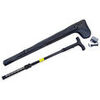 Stun Cane with Flashlight 1 Million Volts - Stun Cane with Flashlight 1 Million Volts! This ZAP Stun Walking Cane is a great self-defense device for the elderly or for anyone who needs support while walking. DEMO VIDEO Stun Cane with Flashlight 1 Million Volts Stun Cane with Flashlight 1 Million Volts - Stun Cane with Flashlight 1 Million Volts! This ZAP Stun Walking Cane is a great self-defense device for the elderly or for anyone who needs support while walking. DEMO VIDEO Stun Cane with Flashlight 1 Million Volts |
 ZAP Blast Knuckles Extreme 950K Volt Stun Gun - The ZAP™ Blast Knuckles Extreme – 950 000 Volt is a shocking high voltage stun gun that provides you with an easy way to protect yourself while on the go. DEMO VIDEO ZAP Blast Knuckles Extreme 950K Volt Stun Gun ZAP Blast Knuckles Extreme 950K Volt Stun Gun - The ZAP™ Blast Knuckles Extreme – 950 000 Volt is a shocking high voltage stun gun that provides you with an easy way to protect yourself while on the go. DEMO VIDEO ZAP Blast Knuckles Extreme 950K Volt Stun Gun |
 Streetwise Sting Ring 18 Million Volts Stun Gun - Introducing our newest design in personal protection the Sting Ring. This revolutionary model separates itself from all other stun guns on the market today and is destined... Streetwise Sting Ring 18 Million Volts Stun Gun Streetwise Sting Ring 18 Million Volts Stun Gun - Introducing our newest design in personal protection the Sting Ring. This revolutionary model separates itself from all other stun guns on the market today and is destined... Streetwise Sting Ring 18 Million Volts Stun Gun |
 Streetwise 18 Million Volt Stun Gun Sting Ring w/Key Ring - ON SALE: 25% OFF! With this power stun gun attached to your keys you will not have to be concerned about it getting lost in the bottom of your purse or wasting va... Streetwise 18 Million Volt Stun Gun Sting Ring w/Key Ring Streetwise 18 Million Volt Stun Gun Sting Ring w/Key Ring - ON SALE: 25% OFF! With this power stun gun attached to your keys you will not have to be concerned about it getting lost in the bottom of your purse or wasting va... Streetwise 18 Million Volt Stun Gun Sting Ring w/Key Ring |
 MultiGuard 80 Million Volt Stun Gun Alarm and Flashlight w/Built In Charger - Stand your ground with the 80 Million Volt MultiGuard Stun Gun Alarm and Flashlight with Built in Charger. Easily concealable and virtually unde... MultiGuard 80 Million Volt Stun Gun Alarm and Flashlight w/Built In Charger MultiGuard 80 Million Volt Stun Gun Alarm and Flashlight w/Built In Charger - Stand your ground with the 80 Million Volt MultiGuard Stun Gun Alarm and Flashlight with Built in Charger. Easily concealable and virtually unde... MultiGuard 80 Million Volt Stun Gun Alarm and Flashlight w/Built In Charger |
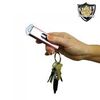 Streetwise USB Secure 22 Million Volt Keychain Stun Gun - ON SALE: 25% OFF! Protection is now as close as your keys...First we revolutionized the stun gun industry by introducing the original Streetwise S.M.A.C.K. (Stun M... Streetwise USB Secure 22 Million Volt Keychain Stun Gun Streetwise USB Secure 22 Million Volt Keychain Stun Gun - ON SALE: 25% OFF! Protection is now as close as your keys...First we revolutionized the stun gun industry by introducing the original Streetwise S.M.A.C.K. (Stun M... Streetwise USB Secure 22 Million Volt Keychain Stun Gun |
 18 Million Volt Talon Stun Gun And Flashlight - Stand your ground with the Talon 18 Million volt Stun Gun. Fits comfortably and seamlessly in the hand the Talon delivers super powered stun protection.The Talon's trigger i... 18 Million Volt Talon Stun Gun And Flashlight 18 Million Volt Talon Stun Gun And Flashlight - Stand your ground with the Talon 18 Million volt Stun Gun. Fits comfortably and seamlessly in the hand the Talon delivers super powered stun protection.The Talon's trigger i... 18 Million Volt Talon Stun Gun And Flashlight |
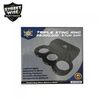 Streetwise TRIPLE Sting Ring 28 Million Volt Stun Gun - ON SALE: 25% OFF! We are proud to introduce the latest in our evolving line of unique and powerful stun guns. Two years ago we introduced our patented Sting Ring Stun... Streetwise TRIPLE Sting Ring 28 Million Volt Stun Gun Streetwise TRIPLE Sting Ring 28 Million Volt Stun Gun - ON SALE: 25% OFF! We are proud to introduce the latest in our evolving line of unique and powerful stun guns. Two years ago we introduced our patented Sting Ring Stun... Streetwise TRIPLE Sting Ring 28 Million Volt Stun Gun |
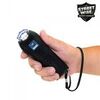 Streetwise Black Jack 21 Million Volt Stun Gun Black - For well over 25 years Streetwise Security Products has been the world's leading brand of innovative self-defense and security products.The innovation continues with t... Streetwise Black Jack 21 Million Volt Stun Gun Black Streetwise Black Jack 21 Million Volt Stun Gun Black - For well over 25 years Streetwise Security Products has been the world's leading brand of innovative self-defense and security products.The innovation continues with t... Streetwise Black Jack 21 Million Volt Stun Gun Black |
 Streetwise Barbarian 9 Million Volt Stun Baton Flashlight - In ancient times barbarians were known for being uncivilized brutal and fierce warriors.“The Barbarian" is the perfect name for our newest stun baton. If Conan ... Streetwise Barbarian 9 Million Volt Stun Baton Flashlight Streetwise Barbarian 9 Million Volt Stun Baton Flashlight - In ancient times barbarians were known for being uncivilized brutal and fierce warriors.“The Barbarian" is the perfect name for our newest stun baton. If Conan ... Streetwise Barbarian 9 Million Volt Stun Baton Flashlight |
 iKeyp PRO Smart Storage Safe w/Expandable Wing Installation - The iKeyp Pro is a smartphone-enabled personal safe that provides peace of mind by bringing security technology and easy access together. It takes only second... iKeyp PRO Smart Storage Safe w/Expandable Wing Installation iKeyp PRO Smart Storage Safe w/Expandable Wing Installation - The iKeyp Pro is a smartphone-enabled personal safe that provides peace of mind by bringing security technology and easy access together. It takes only second... iKeyp PRO Smart Storage Safe w/Expandable Wing Installation |
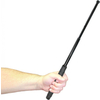 Police Force 21 Inch Expandable Steel Baton - Around the world police officers and security guards are switching from bulky night sticks to this more compact telescopic steel baton.This Police Force 21 Inch Expandable st... Police Force 21 Inch Expandable Steel Baton Police Force 21 Inch Expandable Steel Baton - Around the world police officers and security guards are switching from bulky night sticks to this more compact telescopic steel baton.This Police Force 21 Inch Expandable st... Police Force 21 Inch Expandable Steel Baton |
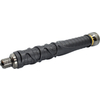 Streetwise Dark Knight Expandable Steel Baton - With the newly designed Dark Knight Expandable Metal Baton you can go out into any dark night with confidence.Like a knight from the dark ages protecting innocent people from... Streetwise Dark Knight Expandable Steel Baton Streetwise Dark Knight Expandable Steel Baton - With the newly designed Dark Knight Expandable Metal Baton you can go out into any dark night with confidence.Like a knight from the dark ages protecting innocent people from... Streetwise Dark Knight Expandable Steel Baton |
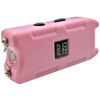 Jolt Attacker Compact Keychain 77 Million Volt Stun Gun - ON SALE: $2 OFF! A keychain stun gun comes in handy to stop the attackers. It's easy to carry; with a simple push-button release switch it can be quickly and easil... Jolt Attacker Compact Keychain 77 Million Volt Stun Gun Jolt Attacker Compact Keychain 77 Million Volt Stun Gun - ON SALE: $2 OFF! A keychain stun gun comes in handy to stop the attackers. It's easy to carry; with a simple push-button release switch it can be quickly and easil... Jolt Attacker Compact Keychain 77 Million Volt Stun Gun |
 Pulse Blowout Bundle w/2 FREE Cartridges + Any Holster - ON SALE: $50 OFF!*LIMITED SUPPLY* Normally the Pulse includes 2 cartridges with any purchase but when you order the TASER Pulse Blowout Bundle you'll get an addit... Pulse Blowout Bundle w/2 FREE Cartridges + Any Holster Pulse Blowout Bundle w/2 FREE Cartridges + Any Holster - ON SALE: $50 OFF!*LIMITED SUPPLY* Normally the Pulse includes 2 cartridges with any purchase but when you order the TASER Pulse Blowout Bundle you'll get an addit... Pulse Blowout Bundle w/2 FREE Cartridges + Any Holster |
 JPX4 4 Shot LE Defender Pepper Gun Black w/Level 2 Holster - The JPX is the perfect carry weapon for these Gun Free Zones. It is not a firearm and considered a pepper spray dispenser or OC delivery system. Why would you ta... JPX4 4 Shot LE Defender Pepper Gun Black w/Level 2 Holster JPX4 4 Shot LE Defender Pepper Gun Black w/Level 2 Holster - The JPX is the perfect carry weapon for these Gun Free Zones. It is not a firearm and considered a pepper spray dispenser or OC delivery system. Why would you ta... JPX4 4 Shot LE Defender Pepper Gun Black w/Level 2 Holster |
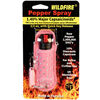 WildFire 1.4% MC 1/2 oz Halo Pepper Spray - When you are shopping around for self defense products you may notice that there are a few items with the name wildfire pepper spray. This product comes from a family of peppers... WildFire 1.4% MC 1/2 oz Halo Pepper Spray WildFire 1.4% MC 1/2 oz Halo Pepper Spray - When you are shopping around for self defense products you may notice that there are a few items with the name wildfire pepper spray. This product comes from a family of peppers... WildFire 1.4% MC 1/2 oz Halo Pepper Spray |
 Safety Technology Barking Dog Alarm - The Barking Dog Alarm is ideal for your home office store business or any place that would benefit from having a security dog. Except you don't have to feed water walk it or take... Safety Technology Barking Dog Alarm Safety Technology Barking Dog Alarm - The Barking Dog Alarm is ideal for your home office store business or any place that would benefit from having a security dog. Except you don't have to feed water walk it or take... Safety Technology Barking Dog Alarm |
 SABRE Aim and Fire Pepper Gel With Trigger and Grip Deployment - Stay safe with SABRE. Boasting the same police-strength protection as law enforcement SABRE RED is the most popular formulation carried by police worldwide ... SABRE Aim and Fire Pepper Gel With Trigger and Grip Deployment SABRE Aim and Fire Pepper Gel With Trigger and Grip Deployment - Stay safe with SABRE. Boasting the same police-strength protection as law enforcement SABRE RED is the most popular formulation carried by police worldwide ... SABRE Aim and Fire Pepper Gel With Trigger and Grip Deployment |
 iSting Personal Protection Pen - Introducing the iSting Personal Protection Pen. Every year approximately 3 million people become victims of a violent assault. The iSting helps you fight back. The small self defense device... iSting Personal Protection Pen iSting Personal Protection Pen - Introducing the iSting Personal Protection Pen. Every year approximately 3 million people become victims of a violent assault. The iSting helps you fight back. The small self defense device... iSting Personal Protection Pen |
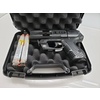 JPX4 C2 With Laser - The JPX4 Compact 2 is a brand new product offered to the public and Law Enforcement by Piexon AG. This is the only product that can fire 4 separate shots of pepper spray at 590 FPS from the nozzle up t... JPX4 C2 With Laser JPX4 C2 With Laser - The JPX4 Compact 2 is a brand new product offered to the public and Law Enforcement by Piexon AG. This is the only product that can fire 4 separate shots of pepper spray at 590 FPS from the nozzle up t... JPX4 C2 With Laser |
|

|
Be assured that your shopping experience is completely safe. The order site is secured using a Thawte SSL Web Server Certificate which encrypts all data to and from the site. However, if you prefer to pay with check or money order, just choose the off-line option when you check out. |

|


